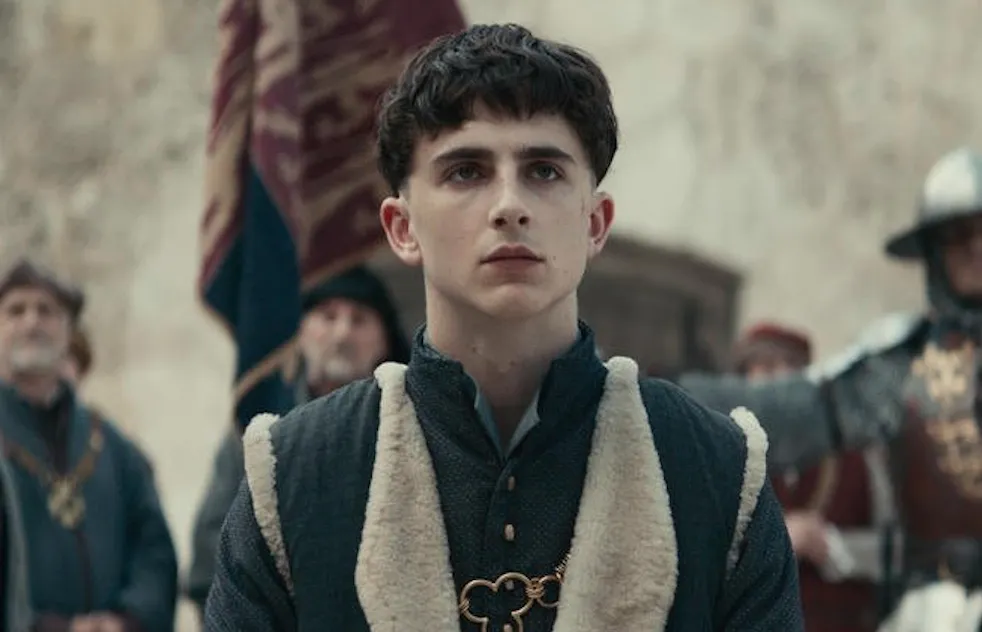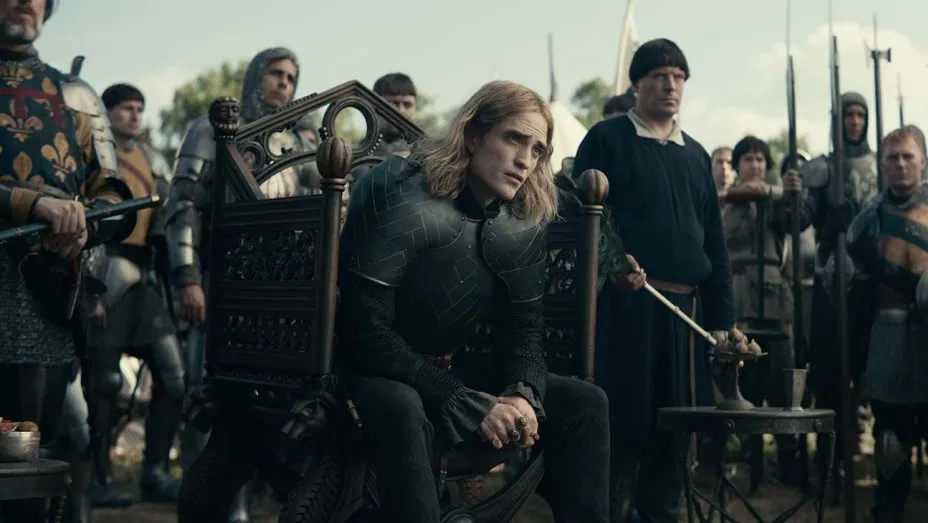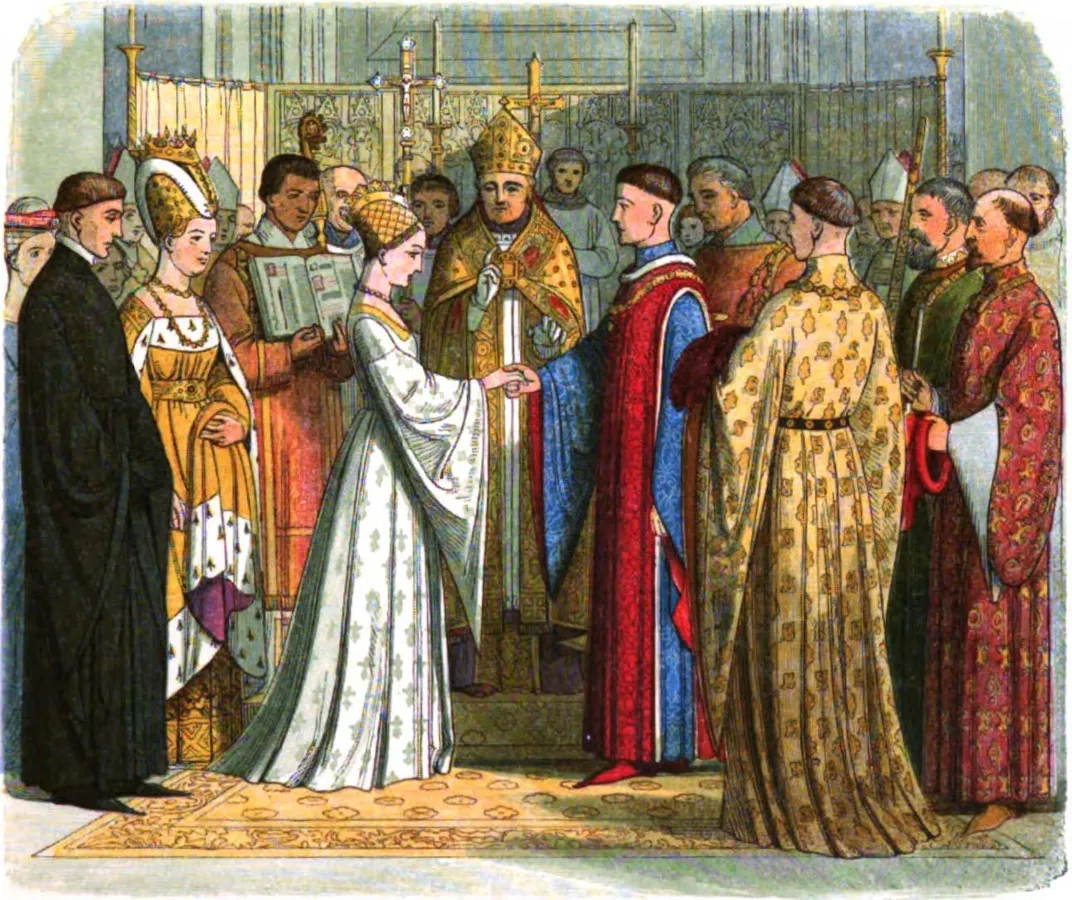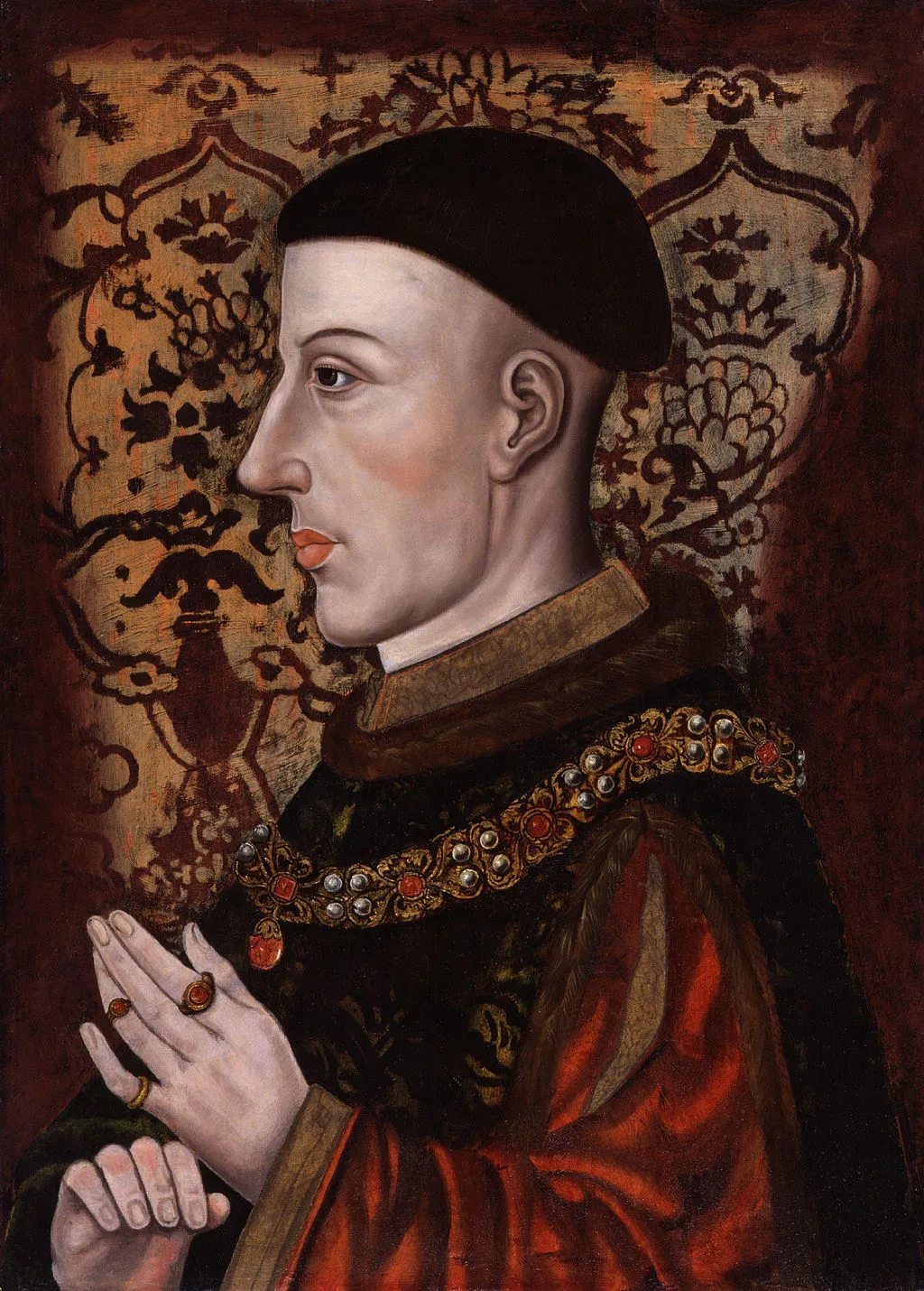The True Story of Henry V, England’s Warrior King
The new biopic “The King” finds Timothée Chalamet tracing Henry’s evolution from wayward prince to heroic warrior
/https://tf-cmsv2-smithsonianmag-media.s3.amazonaws.com/filer/cf/41/cf41888c-f0df-44b1-b9a2-ab11aeca1699/king.jpg)
Henry V was a man of contradictions.
In youth, he was reportedly an “assiduous cultivator of lasciviousness,” but upon ascending to the throne of England in the early 15th century, he won plaudits for his piety. Henry was a formidable warrior—perhaps the greatest the country has ever seen—but thanks to his closely cropped haircut, looked more like a priest than a soldier. He had a reputation for prudent judgment and chivalrous behavior, but in the aftermath of his victory at Agincourt, took the unprecedented step of ordering the execution of all unarmed prisoners. His legacy is one of success, but as historian Peter Ackroyd argues, the triumphs of his military conquests soon faded, leaving “very little … to celebrate” and lending credence to the idea that “all was done for the pride of princes.”
The King, a new biopic starring Timothée Chalamet as its eponymous monarch, examines these seemingly discordant aspects of Henry’s life by tracing its subject’s path from wayward adolescent to heroic warrior. As a newly crowned Henry declares in the movie’s trailer, “A new chapter of my life has begun. … As prince, I spent my days drinking, clowning. Now, I find myself king.”
Loosely based on Shakespeare’s Henriad, a collection of three of the Bard’s history plays, Netflix’s historical drama alternately debunks and perpetuates the many larger-than-life stories surrounding its subject, whose nine-year reign saw a flourishing of royal authority and military action but ended abruptly with his untimely death in 1422. Although The King presents its subject as more realistically flawed than most representations, a sense of his character—how he commanded such loyalty, for instance, or why he pursued goals with a single-minded determination bordering on frenzy—remains evasive.

Chalamet, best known for his Oscar-nominated turn in 2017’s Call Me by Your Name, steps into a role previously played by the likes of Laurence Olivier, Kenneth Branagh and Tom Hiddleston. His Henry is younger, less battle-hardened than these predecessors, a reluctant rather than decisive warrior, albeit one with a striking resemblance to the main surviving likeness.
“He had a long face, a straight nose, and a broad forehead,” historian Ian Mortimer writes in Henry V: The Warrior King of 1415. His thick brown hair was “cut short at the sides and the back,” and his physique was slim yet athletic. A scar on his right cheek—the result of an arrow that struck just below his eye at the Battle of Shrewsbury in 1403—belied the “certain innocence about his expression, a vestige of the earnestness of boyhood.”
The King traces the broad strokes of Henry’s life, placing particular emphasis on the human cost of his military exploits. The Battle of Agincourt, an October 1415 face-off that cemented Henry’s status in the annals of history, takes center stage, but it’s the crush of bodies left on the field following the bloodbath that resonates more than the king’s rallying speech. As one eyewitness later recalled, “The living fell on the dead, and others falling on the living were killed in turn.”
Surprisingly, the movie fails to address the longstanding French conflict’s most significant casualty: Henry himself. Struck by dysentery, an often fatal infection nicknamed the “bloody flux,” while laying siege to the French city of Meaux, the king died just shy of his 35th or 36th birthday. His 9-month-old son, Henry VI, succeeded a father he had never met, setting the stage for a prolonged regency in which advisers ruled on the boy king’s behalf. The adult Henry proved to be a mere shadow of his predecessor, and in 1461, he was deposed by his cousin Edward, Duke of York. The Lancastrian dynasty’s three-generation rule was over, concluding, ironically, much as it had begun some 60 years earlier.
***
Born Henry of Monmouth in 1386 or 1387, the future Henry V grew up during the reign of his paternal cousin Richard II, who inherited the throne following the death of his grandfather Edward III. When Henry was around 13 years old, his father, Henry Bolingbroke, seized power from an increasingly tyrannical Richard, bypassing the laws of inheritance and claiming the crown as a fellow grandson of Edward III. Now Henry IV, the usurping royal placed his eldest son, who had never expected to become king, next in the line of succession.
The two Henrys had an uneasy relationship complicated by the king’s poor health. Although the younger Henry, named Prince of Wales shortly after Henry IV’s 1399 coronation, initially wielded authority in his father’s stead, the pair clashed on foreign policy, and the king attempted to relegate his son to the sidelines. The two personally reconciled toward the end of the sickly king’s life, but Henry’s only role in government, according to Mortimer, “was that of standing by and waiting for the king to die.”
History Extra’s Anne Curry notes that “Henry the prince was a far cry from Henry the king.” The salacious antics detailed in Shakespeare’s verses may be dramatized, the historian explains, but near-contemporary accounts validated by ties with the king’s intimate circles echo the play’s description of a “misspent youth and late change of heart.”
According to Vita Henrici Quinti, a biography penned by humanist scholar Tito Livio Frulovisi during the late 1430s, the prince “was a fervent soldier of Venus as well as of Mars; youthlike, he was fired with her torches.” After the Battle of Shrewsbury in 1403, Henry spent five years in Wales quelling a rebellion. Here, Frulovisi writes, “in the midst of the worthy works of war, [he] found leisure for the excesses common to ungoverned age.”
Like Shakespeare’s Henriad, The King emphasizes the sordid aspects of Henry’s youth: As the Washington Post’s Ann Hornaday writes in her review of the film, the “young and impulsive” prince is most often found “bro-ing down at the pub. Or sleeping it off. Or somewhere in between.” And while Sir John Falstaff (played by Joel Edgerton in the film), a sidekick invented by Shakespeare and known as one of the Bard’s wittiest comic characters, encourages this behavior at first, he soon turns into a surprisingly dour mentor figure, swapping beer and cheer for sage advice and a sword.
Perhaps the most unexpected decision made by director David Michôd is Henry’s portrayal as a peace-loving prince who only resumes hostilities with France after receiving a provocative gift from Louis, son of King Charles VI. Louis, played with panache by a smirking Robert Pattinson, is the film’s main antagonist, acting on behalf of his father, who suffered from debilitating schizophrenia and paranoia. But whereas the fictionalized Louis takes part in the Battle of Agincourt, the dauphin sat the pivotal skirmish out and, in fact, died of dysentery several months later, leaving his younger brother Charles (later Charles VII) heir to the French throne.

The real Henry, according to Trevor Royle’s Lancaster Against York: The Wars of the Roses and the Foundation of Modern Britain, believed he was “divinely ordained to carry out God’s great work”: namely, humbling the prideful nation of France with a show of military might and continuing a campaign begun by his great-grandfather Edward III, who had staked an admittedly questionable claim to both the French and English thrones.
***
Henry IV died on March 20, 1413, at age 45. Mortimer describes his reign, unstable from the start, as “synonymous with rebellion, unease, heresy and doubt”; despite the fact that he took the throne to unseat a tyrant, the people never truly warmed to him, and the state of affairs was such that Henry V decided to begin his own tenure as king with what Dan Jones’ Wars of the Roses deems “significant gestures of reconciliation,” including the reburial of Richard II in Westminster Abbey and the pardoning of rebels active during the previous reign.
The first years of Henry V’s rule saw two potential crises: a religious uprising led by the king’s former friend, Sir John Oldcastle, and a conspiracy aimed at deposing him in favor of another distant relation, Edmund, Earl of March. Henry crushed both rebellions with ease and shifted focus to the main priority of his kingship: the fight against France.

In 1415, Henry and his army set sail for France. They successfully captured the town of Harfleur, but the month-long siege took a heavy toll, with around one-third of the king’s men dying of dysentery.
On October 25, Henry and a vastly outnumbered group of English soldiers clashed with French forces at Agincourt. Historians disagree over the exact size of each army, but estimates tend to place the English troops between 5,000 to 9,000 men and the French closer to between 12,000 and 30,000.
By all accounts, the French should have won the battle. But Henry had a secret weapon: the longbow. As Teresa Cole explains for History Extra, when French cavalrymen attempted to storm the English archers, they found their enemies protected by a sea of sharpened stakes. Arrows rained down on the hapless French soldiers, sending their horses into a frenzy and wreaking havoc on the army’s ranks. Those who reached the English frontlines were easily cut down, their bodies piling up on the field and blocking the way forward. Anyone who slipped or fell in the mud had “little chance of getting up again,” instead succumbing to suffocation under the crushing weight of their comrades’ corpses.
“Numerical advantage meant nothing when the sky rained arrows,” Jones writes, and a “terrific slaughter ensued.”
Some 6,000 French soldiers died during the bloody battle, either in the field or at the hands of Henry’s men, who were given the unprecedented task of executing the prisoners. (Per Peter Ackroyd’s Foundation: The History of England From Its Earliest Beginnings to the Tudors, some of the English soldiers defied the king’s order, ensuring the survival of hundreds of noble prisoners who were then ransomed back to their families.) Against all odds, Henry had won a resounding triumph—still, Ackroyd notes, “no overwhelming victory has ever had such [a] tenuous result.”
The king returned to London, where 20,000 citizens hailed him as the “lord of England, flower of the world, soldier of Christ.” Over the next two years, he consolidated power at home and enjoyed the uptick in influence afforded by his newfound status. But Henry would not rest on his laurels for long: In February 1417, he began a second assault, capturing Caen, Normandy and Rouen and spurring French king Charles VI to sue for peace.

On May 21, 1420, Henry and Charles signed the Treaty of Troyes, which disinherited the dauphin (the future Charles VII) in favor of the English king, named Henry as regent of France, and outlined provisions for the king’s marriage to Charles’ daughter Catherine. The couple wed one month later, and on December 6, 1421, Catherine gave birth to a son named Henry.
By this point, the older Henry was back in France, entrenched in further military campaigns aimed at quashing any vestiges of local resistance. Although he had ostensibly achieved his goal of claiming both England and France’s crowns, Jones writes that the “task of turning this into a political reality … strained every fiber of his formidable being.” On August 31, 1422, the king died of dysentery likely contracted during the siege of Meaux.
“With the same bewildering swiftness that had characterized his life’s every action,” Jones adds, “England’s extraordinary warrior king was gone.”
***
Shortly after Henry V’s death, chronicler Thomas Walsingham eulogized him as peerless among Christian kings and princes. Other contemporaries echoed these sentiments, adding to a growing chorus of praise that solidified Henry’s status as one of England’s greatest monarchs.
In the centuries following his reign, historians tended to highlight Henry’s regal characteristics, overlooking more unsavory traits like his marked cruel streak and cold, even severe demeanor.
As Ian Mortimer explains, “His negative traits were forgotten, all the failures of the age were blamed on other men, and all the successes attributed to him.”
But more recent scholarship has sought to demystify the man behind the myth, presenting a more well-rounded portrait of a leader who, in the words of Encyclopedia Brittanica’s C.D. Ross, used his “great gifts not for constructive reform at home but to commit his country to a dubious foreign war.”
Writing in Lancaster Against York, historian Trevor Royle offers a concise assessment of Henry’s all-consuming military campaigns: “For all that he waged a successful war against France and for all that he exacted from his defeated enemy a peace treaty that gave him most of what he wanted, Henry’s campaigns in France created as many problems as they solved.”
Henry’s son, Henry VI, was a disastrously incompetent king whose poor decision making led to the Wars of the Roses and the fall of the Lancastrian dynasty. Still, the warrior king’s legacy endured long beyond his death, mainly via popular lore but, in an indirect sense, through his widow’s second marriage. Against all protocol and tradition, Catherine of Valois secretly married a Welsh courtier around 1431 or 1432. Her new husband’s name: Owen Tudor, grandfather of Henry VII and the unlikely founder of one of England’s most well-known royal houses.
/https://tf-cmsv2-smithsonianmag-media.s3.amazonaws.com/accounts/headshot/mellon.png)


/https://tf-cmsv2-smithsonianmag-media.s3.amazonaws.com/accounts/headshot/mellon.png)